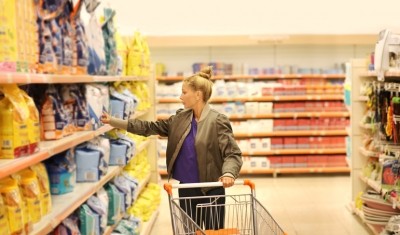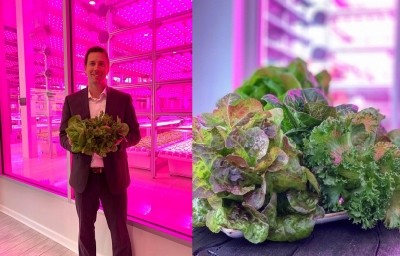Rising food prices push consumers to consider alternative proteins, DIY sourcing and locally grown

For a variety of reasons – many stemming from the ongoing coronavirus pandemic – the price of food consumed at home has increased on average 3.4% so far in 2020 compared to last year and are expected to rise an additional 1-2% in 2021, according to the US Department of Agriculture.
At the same time, many Americans have lost jobs, faced salary cuts and been forced to eat at home more in 2020 than last year due to measures designed to slow the spread of COVID-19. As such, they are looking for creative ways to balance home budgets while still placing nutritious food on their tables.
Among the most popular strategies to make ends meet by consumers are reducing their meat costs and practicing “nutritional budging” to get more for their money, according to Cheryl Auger, associate director of client success at MotivBase, which claims to use artificial-intelligence anthropology to “decode, quantify and predict trends, issues and needs through a consumer-led lens.”
Less popular but quickly emerging strategies uncovered by MotivBase by gathering and analyzing insights from nearly 477,000 consumers across the continental US on nearly 16,000 topics include favoring local or urban food production, growing their own food and shunning food waste, Auger told attendees during a recent FMI webinar on consumer perceptions of food prices.
Saving on proteins
Perceiving protein, and especially beef, to be one of the most expensive items on their grocery lists, MotivBase found many consumers are looking to save on protein by buying less popular, and therefore less expensive, cuts of meat, such as pork bellies and ground beef, Auger said.
They also are buying protein in bulk to secure a discount, and in some cases even practicing butchery at home by breaking down larger cuts or quartering whole chickens at home to save money, she added.
Others are turning to plant-based options, but Auger said many see this as a last resort because they like animal protein and are worried that if they reduce or remove it from their diets they would miss key amino acids that they need to stay healthy.
Based on these insights, she recommends retailers look for ways to help consumers save on protein to drive foot traffic in their stores, and urges brands to consider ways to incorporate their products in tighter budgets to potentially win consumer loyalty that will outlast the pandemic.
Adapting “nutritional budgets”
Recognizing that protein is not the only nutrient needed for a healthy lifestyle, MotivBase found consumers increasingly are practicing what it calls “nutritional budgeting” – or prioritizing purchases to ensure they get enough calories and essential nutrients in their diets, Auger said.
One way they are doing this is by comparing “calories per dollar” at different retailers and quick service restaurants. They also are turning to subscription services that offer discounts for “ugly fruits and vegetables” to save money while still getting vitamins.
Some consumers are even taking a more DIY approach and buying seasonal items in bulk and then preserving them at home to maximize a deal while ensuring there is sufficient healthy food in the future, Auger said.
Home grown and locally produced
In addition to preserving produce and seasonal items purchased at the store, some more ambitious consumers are growing their own fruit, vegetables, herbs and greens to save money.
“This is a trend that was also likely influenced by COVID as many people started their own kind of COVID victory gardens,” when they feared that food would be hard to find in stores during the early pantry loading days, Auger said.
For those who aren’t blessed with a green thumb or don’t have access to resource to grow their own food, they are looking to save money by buying local and supporting urban food production, which they perceive as less expensive because it has lower travel costs, Auger explained.
“There is a concern that food traveling around the world is pushing prices up, and so the solution is more local food productions. They would like to see cities and other urban spaces start to engage in some of that vertical farming, regenerative agriculture and just make a connection for urban dwellers and their food supply,” Auger said, adding this approach also would, “in their minds, potentially reduce travel costs, travel time and really increase that connection.”
Low tolerance for food waste
Food waste has been an emerging concern for its environmental impact in recent years, but seeing so many people go hungry during the peak of the pandemic while food was being wasted at retail or the corporate level has raised consumers’ hackles, Auger said.
“They are concerned that grocery stores are throwing vegetables away instead of donating them or discounting them so that others would be able to buy them before they became waste,” she explained.
She also noted that this conversation is starting to extend to what consumers see as excessive packaging, which is driving them to buy more in bulk – a strategy that Auger says many see as a “double whammy” because they can save money and the environment.
While many of these trends are early on the adoption curve, Auger says that the pandemic is accelerating consumer awareness and acceptance of them – making them issues that retailers, brands and suppliers should consider now.























